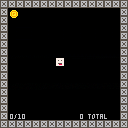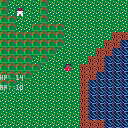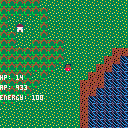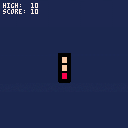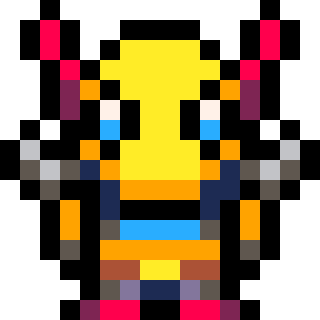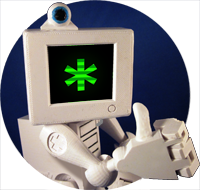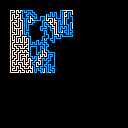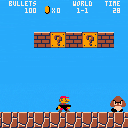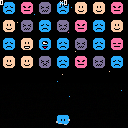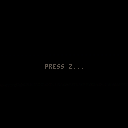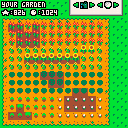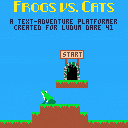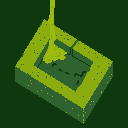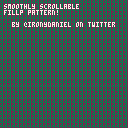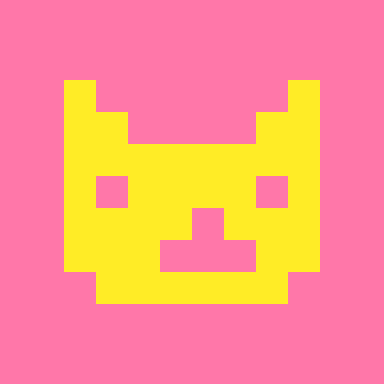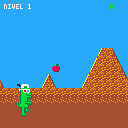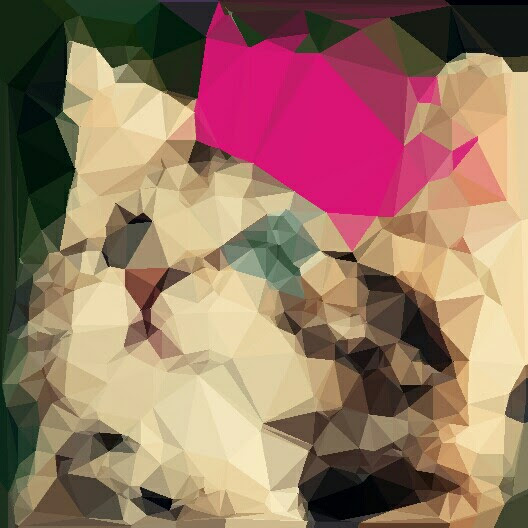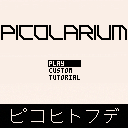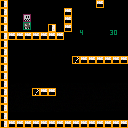
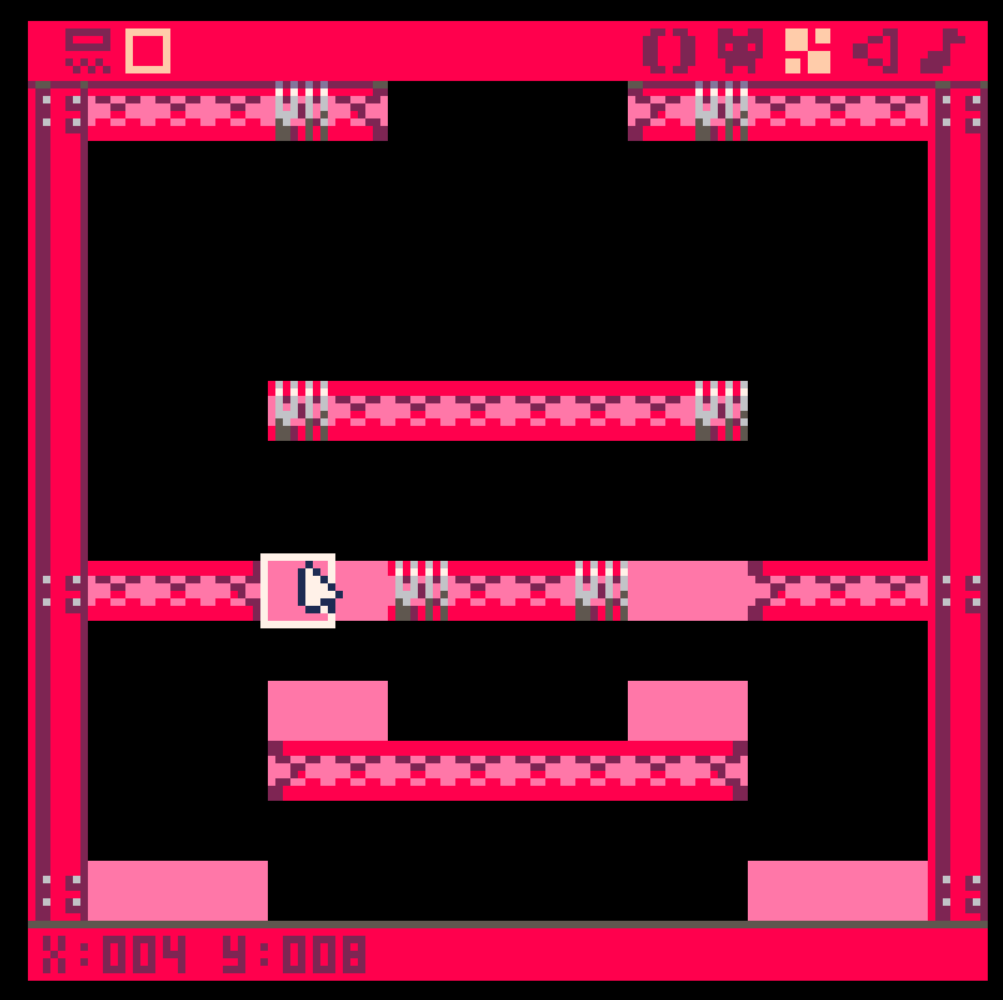
the image is map of my game.
pink rectangles are empty sprite on the map.
If game characters enters the location of these empty sprites, some events should happen.
I asked similar question some days ago, a person said me to use mget method.
https://www.lexaloffle.com/bbs/?pid=51536#p51536
I thought I should compare player's x coordinate and y coordinate to coordinates of sprite. I tried some days but nothing helped.
p={
x= --x coordinate of player
y= --y coordinate of player
}
|
p.x and p.y are coordinates of player. I can't change that because my code has 600~700 lines..
could someone help me with simple examples or description?

Cabledragon was talking to me about perlin and simplex noise generation, and we were looking at various web pages on the subject. One of them was a novel implementation of a simplex noise generator, written by Kurt Spencer, a game dev who did not wish to be subject to Perlin's patent on his own version of simplex noise:
http://uniblock.tumblr.com/post/97868843242/noise
With a public-domain javascript implementation of 2D, 3D, and 4D noise here:
https://gist.github.com/kdotjpg/b1270127455a94ac5d19
The 3D and especially the 4D code is rather long and spaghettilike, though I suspect for good reason, but I noticed the 2D code was not too bad, really, so I took a pair of Lua shears to it and made it fit on our little platform.
It performs pretty well. It looks good, and while you can't efficiently use it to set every pixel on your screen, it's quite adequate for caching your terrain at app launch, or even for real-time generation of the area immediately around you, if you can be somewhat economical with how many times you sample the noise.
Note that, as mentioned in the code, the shell I wrote around this adaptation isn't particularly useful. It's just a custom-made and optimized-to-the-point-of-being-ugly viewer for the noise generator.
[b]The generator code is on the second tab, and that's what you'll want to look at if you want to use it yourself.

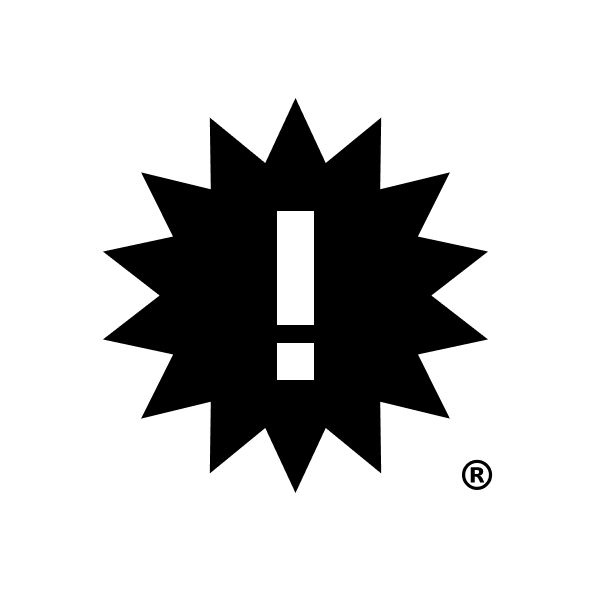
This is a first attempt at putting together a game in Pico-8. It's not done, of course, and most of the game features haven't yet been implemented. Eventually, I hope it'll be a demake of something like Neo Scavenger.
v0.10
-Refactored code to contain multiple states (states other than main game mode not yet implemented)
-Cleaned up old code that had been commented out
-Commented most things for clarity
v0.06:
-Added system for terrain types
-Updated HUD and removed useless Energy stat
-Updated art assets slightly
v0.05:
-First commit, laid down basic movement, map drawing, and set up the player
I'm not sure if any chip / pocket chip users have been following the discussions over at nextthing forums but it looks like they are officially done.
We have traditionally taken our updates via apt-get update and I was wondering what might happen if their servers go offline. Is there going to be a binary that we can install?
I don't think anything is going to break anytime soon but I thought that it couldn't hurt to ask.
D


I made this game for LD41 with a single question in my head: what happens if Mario had a machine gun?
I took some inspiration from GTA and added some achievements to reward different types of play.
The great music is "Demented Mario" by @gruber_music (https://gruber99.bandcamp.com/album/pico-8-tunes-vol-1) and the platforming code (and Mario sprites!) is based on the excellent work by @matthughson - see the advanced micro platformer thread at https://www.lexaloffle.com/bbs/?tid=28793
LD page: https://ldjam.com/events/ludum-dare/41/super-mario-machine-gun/
Apologies to Mr Miyamoto.

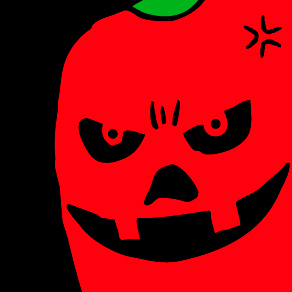
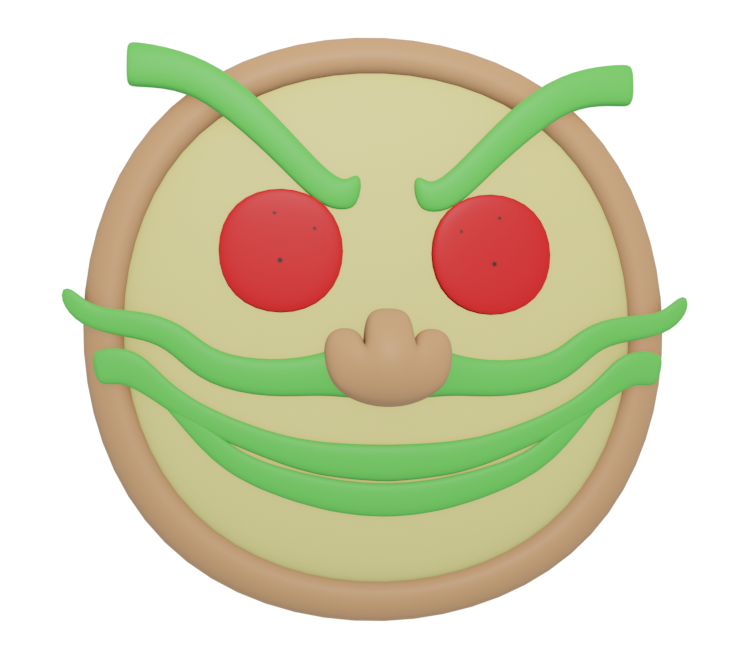

I would like to present jspicl, a transpiler for building PICO-8 games in JavaScript!
Some of the benefits with using jspicl are that you'll be able to:
- write your code in a language you love
- get access to a wide range of tools and featuers in the JavaScript ecosystem (linting, es2015+, npm packages)
- use your editor of choice (with improved code completion, refactoring, navigation)
jspicl will transpile JavaScript down to the subset of LUA that PICO-8 uses. It will include polyfills automatically in the cases where certain language features are not available.
A simple mario game showcasing this can be found here and more are coming.
Please let me know what you think, I would love to receive some feedback.

Controls: Arrow keys to hop around, up to jump straight up, Z to inspect things behind you
This was originally my submission to the Ludum Dare 41 Compo, my first Ludum Dare! I've been playing with PICO-8 on a different as-yet-unreleased project, but decided to jump in on a game from scratch for LD. The theme was "combine two incompatible genres", and I went with a side-scrolling text adventure. I started Saturday morning, so the original was made in something like 28 hours of coding/eating and 5 hours of sleep. It was functional and winnable, barely, but I love my little frog creation and want him to have a better world, so I've been working on improving it.
So you've told us we can suppress the system pause menu with this:
poke(0x5f30,1) |
And that works great. However, I wanted to write something that allows you to access both the game pause and the system pause, by using short presses for game pause and long presses for system pause. Unfortunately, there's a bug/misfeature/oversight that prevents this:
You're still debouncing the button at the system level, even if the system menu is disabled, so if the button is held down, it's only reported down on the first frame. This prevents me from detecting a long press.
I'm guessing this is just because you check the menu-suppression flag after you've recognized and absorbed the button press, rather than wrapping the button check as well.
Any chance of a fix in the next version? :)


Hey! This is my first Pico-8 game, a clone of the DS game Polarium.
It contains 100 levels. You can get a hint for every level if you're stuck.
There's also a level editor, which lets you create your own custom levels. You can even share levels with other people with 30-digit passwords. These passwords are completely compatible with Polarium, so you can also find lots of levels other people have made online for an extra challenge. 20 custom levels can be stored.
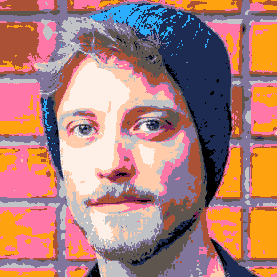







Hey guys, this is sort of my first attempt to really make something with PICO-8 from scratch. Before making this, my only other PICO-8 experience was I followed the Squash tutorial from the PICO-8 zine and a bit of that tron light cycle tutorial on YouTube a few months ago and worked a little bit on a kind of turn based pong/space invaders kind of thing for a little bit but I didn't really make too much progress with that xD.
I was participating in Ludum Dare for the first time and PICO-8 was the only game making tool I knew how to use, so I tried making a game over the last weekend. The theme was making a game with two incompatible genres. I wanted to try and make a pinball/platformer game. The idea being you could charge yourself up at any time and fling yourself in a direction like a pinball at any given time and bounce off the walls to navigate gaps or climb upwards etc.
I got the charge and bouncing working on just a blank screen against the walls of the screen but then I started working on the platforming aspect. Unfortunately, I wound up spending pretty much the entire weekend trying to figure out how to make collisions work so the player could stand on platforms and not go through walls. I tried coming up with a bunch of different methods for it and I was finally starting to get some real headway by the end of it but then I was out of time.
You can see in the game that I have collision boxes drawn over every tile with a 1 flag(for collideable walls and platforms that should block the player) and collision boxes drawn over the player to help diagnose what was actually happening. The numbers are some debug data I was using previously. At this point the great difficulty was getting the player to be able to collide with the floor and walls at the same time. If I tried having code implemented for both, the player would fall inside of the tile floor tile, and then immediately get flung off the screen to the left, as it would push the player to the left side of the floor tile and into another floor tile.
The morning after I actually managed to solve that problem and actually have floors and walls working, although it's still a little janky. Unfortunately though, I never actually got far enough along to really make a game before the jam was over. Still, I put so much work into getting these fundamental parts together, I feel like I have to actually make something with it now that the jam is over, so I'm going to keep working on it. I'm mostly just uploading it here to see if this will let me have a playable version in browser that I could post in a blog post for the Ludum Dare site xD.
Also, in this version the player actually appears two pixels over the floor upon contact rather than just stopping and staying still where he collides with the floor. That's what causes the little hopping effect. It wasn't how I originally intended it but given this is just a "tech demo" I decided to leave it in, because frankly it just made the dude lot more fun to move around the screen ^_^. Go little hop dude, go!
This is really my first attempt to actually make a thing with programming. I've read through some of a java book, did javascript tutorials and had a C++ class and Java class in high school, but I always felt like my education always dropped just short of the point where I could actually make something with it. That's been one of the real joys of PICO-8 for me. Lua was simple enough to pick up and for the first time it felt like I could actually really write code and make a thing rather than just push values around and not even know how to get them appear on the screen outside of the console.
Hope you like my little thing. Now after thinking about it a bit, I might post what little I had of The Legend of Pong too down the road :)





 5 comments
5 comments


